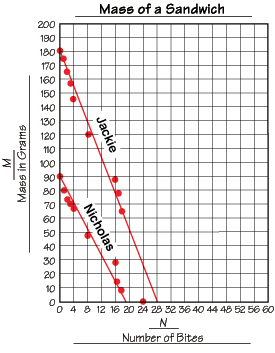Students read the story “Bats” and use connections between ratios, proportions, and graphing to determine whether the number of tagged bats (t) in a fictional sample is proportional to the total number of bats (n) in the sample. Students then simulate this story with a lab investigation of their own using beans in a container to represent bats in a cave. Students use sampling ratios, graphs, and proportional reasoning to find an approximation of the total number of bats in their cave.
Content in this Lesson
- Representing the relationship between variables as a ratio [E2].
- Finding equivalent fractions and ratios using a variety of strategies (e.g. using models, using multiplication and division, using graphs and tables) [E3].
- Using ratios and proportions to solve problems [E4].
- Representing the variables and procedures of an investigation in a drawing [E9].
- Collecting and organizing data into a table and line graph to represent the relationship between variables [E10].
- Making point graphs and drawing best-fit lines to represent ratios and proportional relationships [E11].
- Using patterns in tables and line graphs to make predictions and solve problems [E12].
Assessment in this Lesson
| Assessment | Expectation Assessed | Math Practices Expectation Assessed |
|---|---|---|
|
Sampling and Proportion |
|
|
|
Sampling and Proportion |
|
|
|
DPP Item HH |
|















 or 3 miles per 2 hours.
or 3 miles per 2 hours.